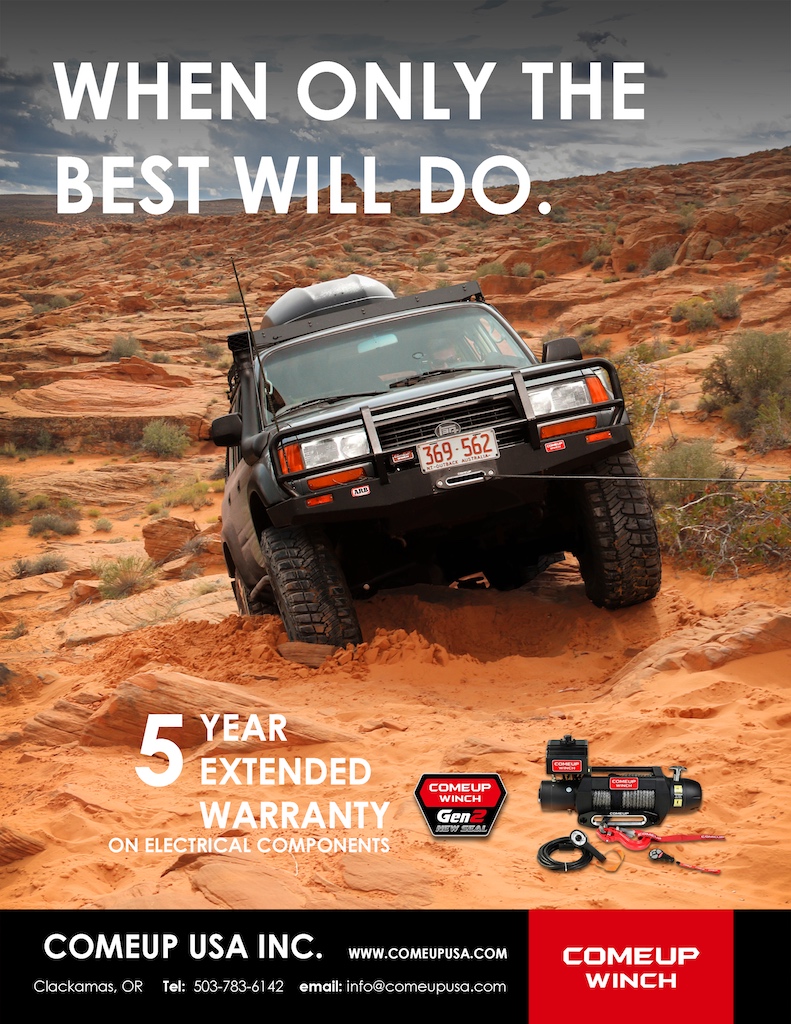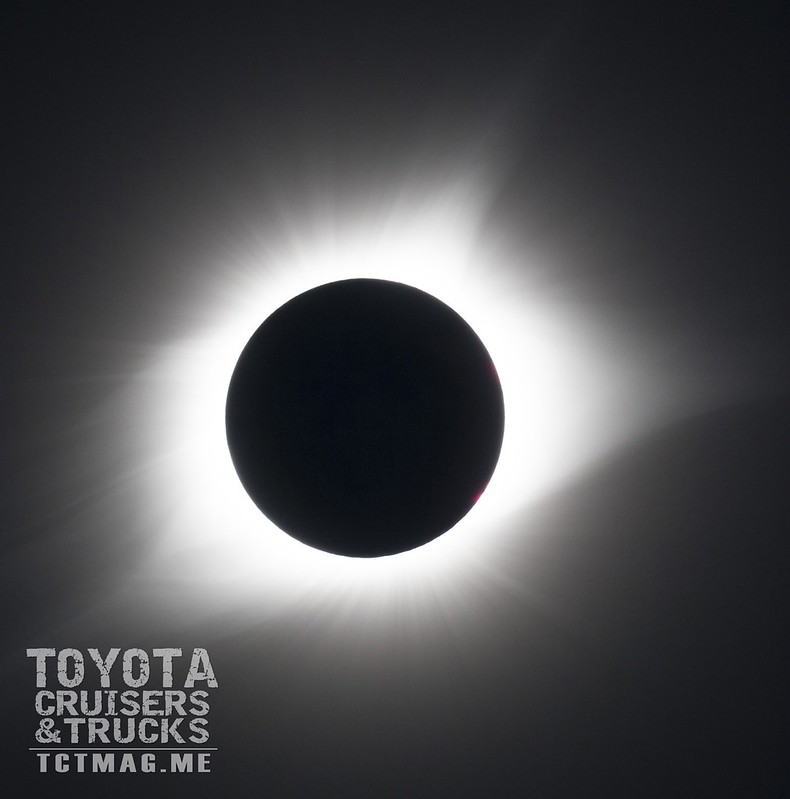
Picking out first-time campers was quite easy: no shade, no table, tent set up right next to the road, and car parked partially in the road. Some people didn’t even bring chairs, so they sat on the ground and leaned against their vehicles. Seems it took an eclipse to get people to leave their comfort zone and experience the great outdoors. Hopefully they took note of the gear used by others and will want to pursue natural escapes.
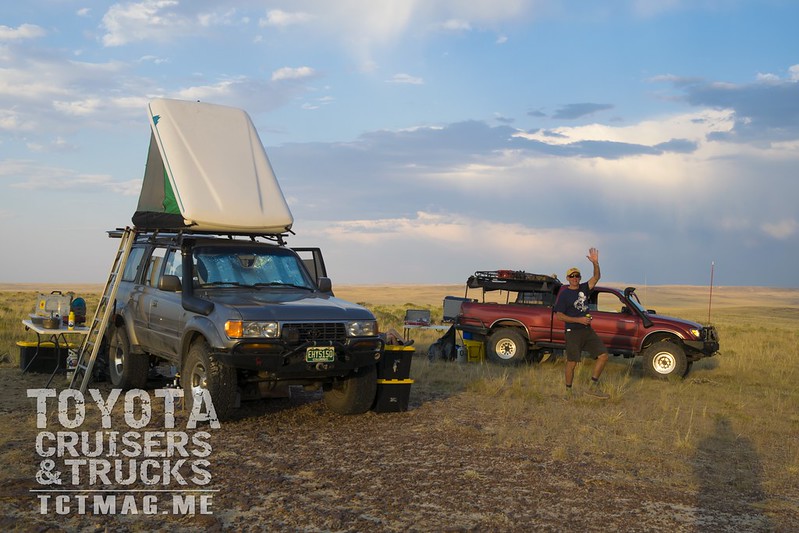
A group of fellow Toyota off-roaders started organizing an eclipse gathering back in 2012. Castle Gardens area was the chosen destination. I received my invite in 2016 and started planning the telescope situation. Despite all the planning and the multiple eclipse photography tutorials and articles I endured, my preparation was still inadequate. I didn’t capture the eclipse quite how I envisioned. Fortunately, I learned my lessons and have 7-years to prepare for the next total eclipse.
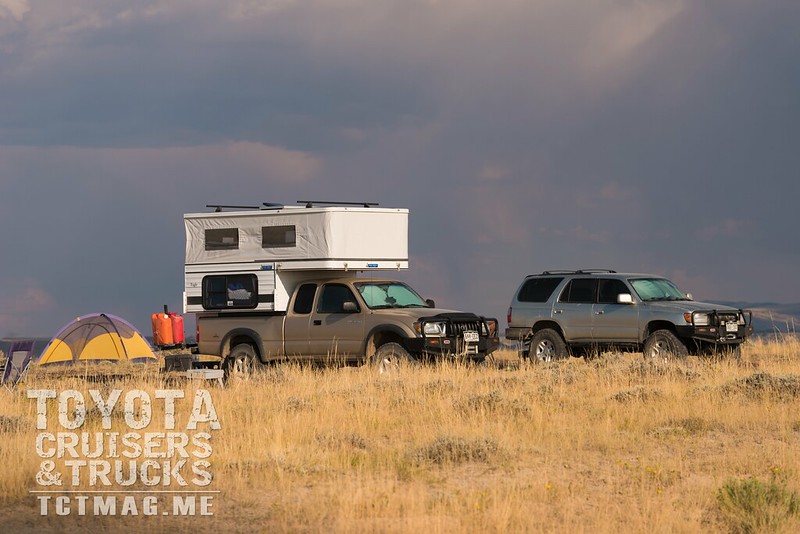
I arrived at Castle Gardens on Friday, August 18 found one of the organizers, Bob Devereux, and his wife sitting next to their 80-series Land Cruiser enjoying the setting sun. My friend Stan Gibson was the next to arrive. When the last bit of sunlight vanished, I treated my camp mates to an evening of deep space objects viewing. Using an 130mm aperture apochromatic refractor, we examined galaxies, nebula, and star clusters. We finished with the Andromeda Galaxy—an object so large that it fills even the lowest power eyepiece. I always enjoy sharing views through my telescope with people who have never experienced a telescope in dark skies. Hearing the expressions of amazement make it worth the effort.
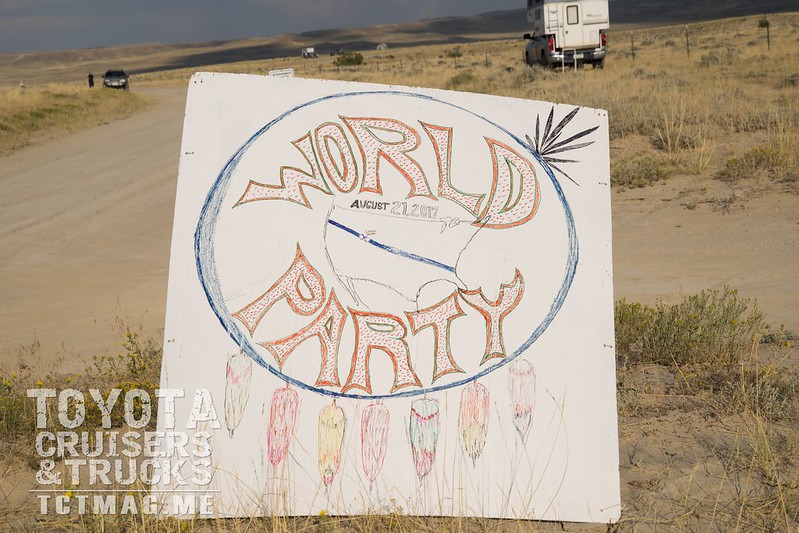
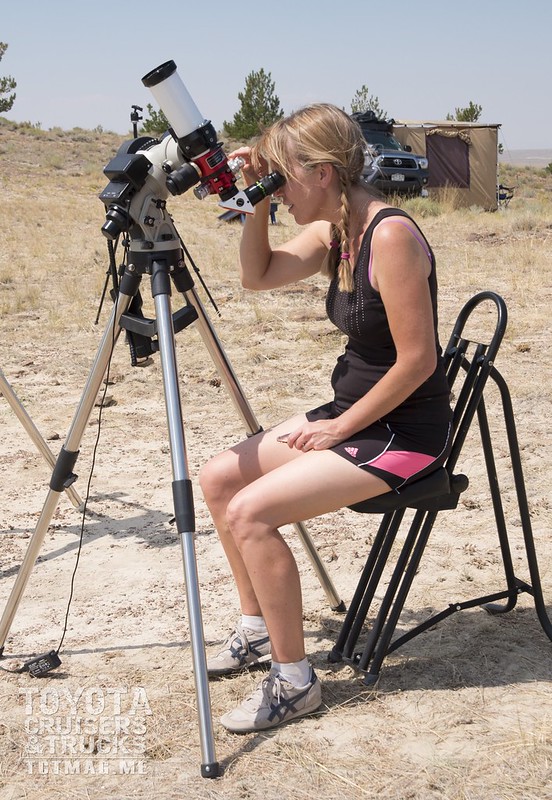
The next day, as more friends arrived, I set up the Hydrogen-Alpha dedicated solar telescope (Lunt 60THa). This filtered telescope displays surface detail of the sun, as well as solar flares at the edge of the sun. A set of sun spots across the middle resembled the Caribbean Islands. Two large solar flares, each capable of holding 5 to 6 earths, were visible.
Related Articles
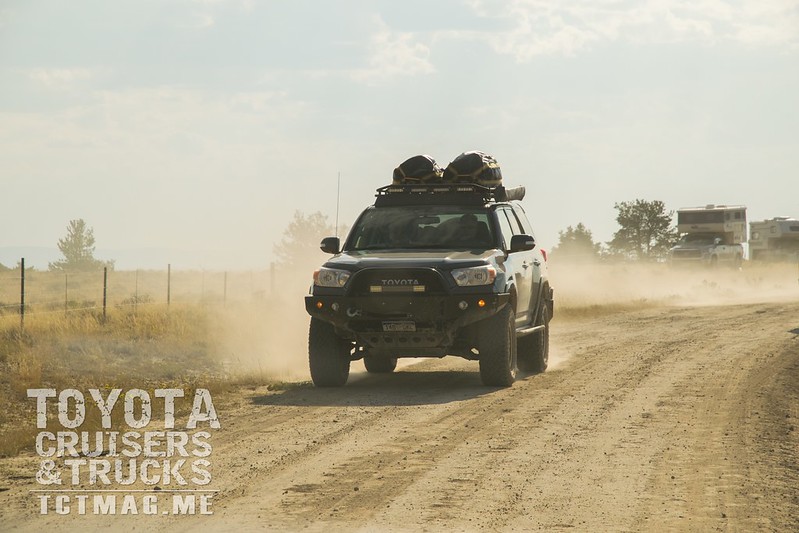
On eclipse day, the human presence was strong. Dead rattlesnake carcasses were scattered across the dirt roads—evidence of the numerous vehicles that drove into the Castle Gardens area the previous night. Reports of a rave party was shared by frustrated amateur astronomers, who lost their dark skies to the glamping and party lights. Roadside rookie campers were subjected to dust as vehicles sped down the dirt roads as though they were shooting a Mad Max scene.
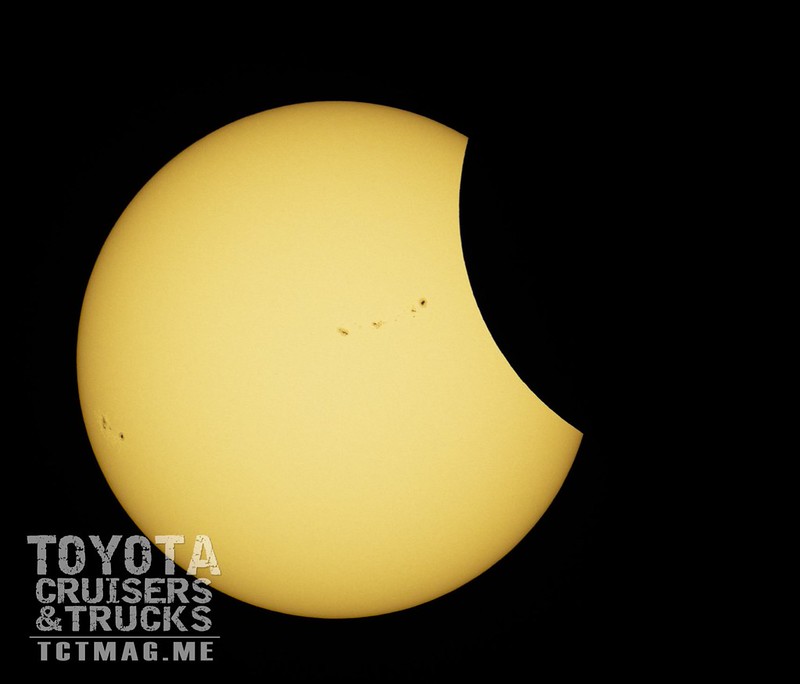
Fortunately, the organizers for the gathering I was with had found us a spot up on a hill next to a cliff. Accessing this area required high clearance. We thought we were safe from the herds of rookie campers. While most vehicles that attempted to come up in our direction were defeated, a little AWD Subaru wagon with paper tags managed to conquer the high clearance road, take a left and drive right into the middle of our campsite. Realizing we were not the droids he was looking for, he turned around. 30 minutes later, he was back, and this time he tried driving through the middle of our campsite. One of the guys sprinted past the Subaru and stopped the lost and confused driver before he damaged his new car and our camping gear.
The cookie-bite look of the sun greeted us after breakfast on eclipse day. It wasn’t long before the morning sunshine was more yellowish-orange than white and people were looking up with their ISO-certified cardboard specs. I was feverishly shooting bracketed photos through 2 DSLR cameras attached to 2 different telescopes. One was equipped with a dark ND filter, the other with a white light solar filter. Totality came too fast. I removed the filters and started capturing the corona and solar flares. After 2 minutes and 20 seconds, totality was over. People were cheering. It was truly a moving experience. Light increased and I tried to capture the diamond ring effect. Turns out, it is better to shoot that through long focal length camera lens than through a telescope. Lesson learned.
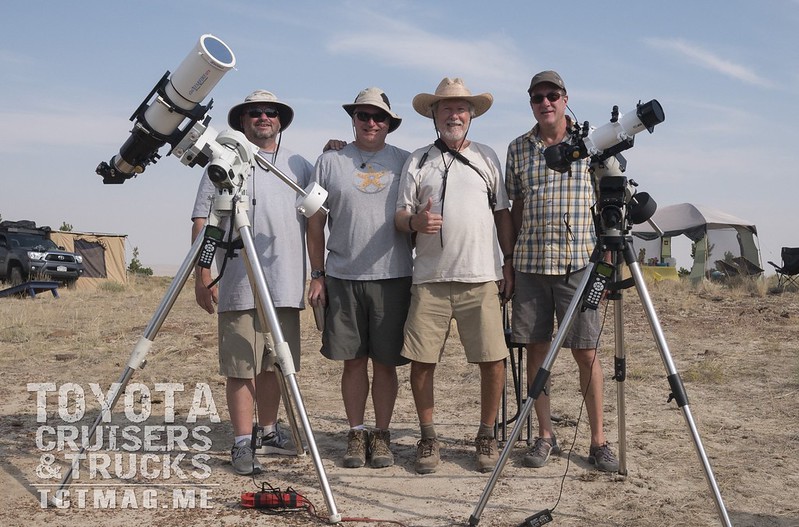
[flickr set=72157687442054501]
To get your copy of theSummer 2017 Issue: |







